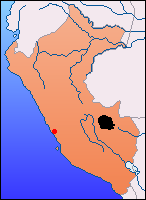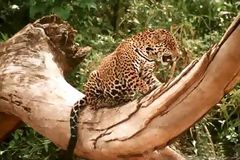 |
Related pages: |
 Located in the southeastern region of Peru, the Manu Biosphere Reserve is one of the richest protected areas in the world in terms of biodiversity. This UNESCO World Heritage site spans more than 1.5 million hectares, from The Andes to the Amazon. Manu is a must-visit destination for nature lovers and biodiversity enthusiasts, offering an incredible variety of flora and fauna.
Located in the southeastern region of Peru, the Manu Biosphere Reserve is one of the richest protected areas in the world in terms of biodiversity. This UNESCO World Heritage site spans more than 1.5 million hectares, from The Andes to the Amazon. Manu is a must-visit destination for nature lovers and biodiversity enthusiasts, offering an incredible variety of flora and fauna.
The Manu is divided into three main zones: the cultural zone, the transition zone, and the national park. The cultural zone allows visitors to explore the habitats of local communities, while the national park is reserved for scientific research and conservation efforts. Visitors can explore a variety of landscapes, from mountains to tropical rainforests, housing fascinating ecosystems.
The Manu National Park is renowned for its exceptional biodiversity. It is home to approximately 15,000 plant species, over 1,000 bird species, and numerous mammals, insects, and reptiles. Iconic species include the jaguar, tapir, spider monkey, and several species of colorful parrots and toucans. Birdwatchers will find a paradise here, with rare and exotic species to observe year-round.
The park's rivers, such as the Manu and Madre de Dios, also host important aquatic wildlife, including caimans and giant otters. Manu is a unique ecosystem where species from different habitats coexist, making it a natural laboratory for scientific research and biodiversity conservation.
Manu is also home to several indigenous communities that have preserved their traditional ways of life. Some of these communities, such as the Machiguenga, have lived in harmony with the forest for centuries. These indigenous peoples play a vital role in preserving local biodiversity through their deep knowledge of the forest ecosystems.
Travelers have the opportunity to visit these communities in the cultural zone of Manu, where they can learn more about their traditions, crafts, and sustainable ways of living. It is a rare chance to understand the intimate connections between indigenous peoples and their natural surroundings.
Visiting the Manu Biosphere Reserve is an adventure in itself. Tours take you deep into the jungle, often by boat along the rivers, to explore the local flora and fauna. Guided tours are available for wildlife watching, including early morning excursions to see birds feeding on clay, a unique spectacle that is a delight for birdwatchers.
Eco-lodges located nearby allow visitors to immerse themselves in nature while minimizing their environmental impact. Some lodges offer environmental education programs to help guests better understand the conservation challenges facing a region as complex as the Amazon.
Despite its status as a national park, the Manu Reserve faces environmental challenges such as illegal deforestation and mining. Protecting this region is crucial not only for conserving its biodiversity but also for the survival of indigenous communities that depend on its natural resources. Conservation efforts are coordinated between the Peruvian government, NGOs, and researchers to safeguard this natural treasure.
Manu remains one of the best-preserved areas of the Amazon today. By visiting this extraordinary site, travelers contribute to protecting this unique region while experiencing one of the world's last great wildernesses.